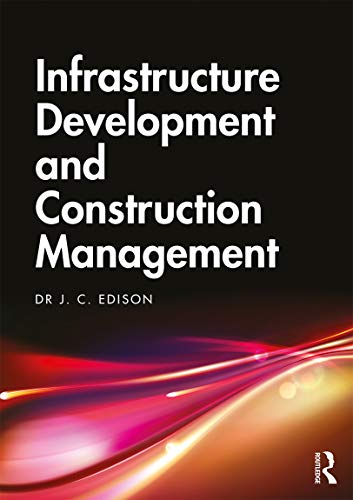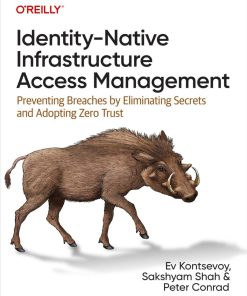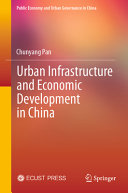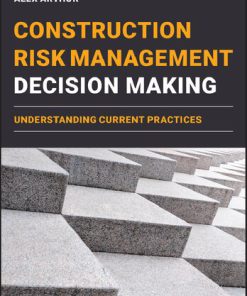Infrastructure Development and Construction Management 1st Edition by J. C. Edison 9781000192575 1000192571
$50.00 Original price was: $50.00.$25.00Current price is: $25.00.
Infrastructure Development and Construction Management 1st Edition J. C. Edison – Ebook Instant Download/Delivery ISBN(s): 9781000192575, 1000192571
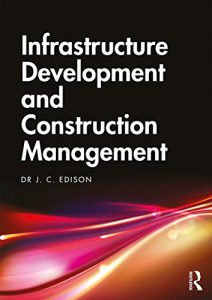
Product details:
- ISBN 10:1000192571
- ISBN 13:9781000192575
- Author: J. C. Edison
Infrastructure Development and Construction Management
Table contents:
1 Why is infrastructure development important?
1.1 Introduction
1.2 Role of infrastructure development in economic growth
1.3 Role of infrastructure in economic growth
1.4 Indian infrastructure
1.5 Role of construction industry in socioeconomic development
1.6 Real estate and urban development in India
1.7 Project investments
1.8 Macro-economic aggregates
1.9 Data and the model
1.10 Conclusion
Notes
References
2 Construction industry in India
2.1 Development of physical infrastructure
2.2 Critical role of construction industry in economic development
2.3 Characteristics of the construction industry
2.4 Structure of construction industry
2.5 Nature of investment
2.6 Opportunities in the construction industry in India
2.7 Present scenario of the construction industry
2.8 Growing firms of the construction industry in India
2.9 Constraints of Indian construction industry
2.10 Project delays and disputes
2.11 Factors influencing construction productivity
2.12 Conclusion
Notes
References
3 Real estate industry in India A financial analysis
3.1 Introduction
3.2 Literature review
3.3 Real estate industry in India
3.4 The study
3.5 Methodology
3.6 The real estate industry and the growth of the Indian economy
3.7 Real estate industry ratio: Analysis, results and discussions
3.8 Conclusions
Notes
References
4 Economic analysis of projects
4.1 Introduction
4.2 Economic analysis
4.3 Benefit–cost analysis
4.4 Investment decision criteria
4.5 Shadow prices
4.6 Risk and sensitivity analysis
4.7 Sustainability analysis
4.8 Conclusion
Appendix 1
Notes
References
5 Tendering and bidding
5.1 Introduction
5.2 Contract and the tender
5.3 Selecting a contractor
5.4 Preparation of tender documents as per CPWD Works Manual
5.5 Bidding documents: World Bank–funded projects
5.6 Prequalification
5.7 Preparation of bids
5.8 Submission of bids
5.9 Processing of bids
5.10 Award of work
5.11 Conclusion
Notes
References
6 Contracts and contract management
6.1 The contract
6.2 Contracts on the basis of validity, formation and performance
6.3 Contract delivery formats/methods
6.4 Special purpose vehicle
6.5 Employer, contractor, architect and engineer in contract management
6.5.1 The employer
6.5.2 The contractor
6.5.3 The engineer
6.5.4 The architect
6.6 Management of contracts
6.7 Factors to be controlled in contract administration
6.8 Contractors’ reporting to the employer
6.9 Contract closure
6.10 Conclusion
Notes
References
7 FIDIC conditions of contract
7.1 Introduction
7.2 Clause 1: General provisions
7.3 Clause 2: The employer
7.4 Clause 3: The engineer
7.5 Clause 4: The contractor
7.6 Clause 5: Nominated subcontractors
7.7 Clause 6: Staff and labour
7.8 Clause 7: Plant materials and workmanship
7.9 Clause 8: Commencement, delays and suspension
7.10 Clause 9: Tests on completion
7.11 Clause 10: Employer’s taking over
7.12 Clause 11: Defects liability
7.13 Clause 12: Measurement and evaluation
7.14 Clause 13: Variation and adjustment
7.15 Clause 14: Contract price and payment
7.16 Clause 15: Termination by employer
7.17 Clause 16: Suspension and termination by contractor
7.18 Clause 17: Risk and responsibility
7.19 Clause 18: Insurance
7.20 Clause 19: Force majeure
7.21 Clause 20: Claims, disputes and arbitration
7.22 Changes in FIDIC 2017
7.23 Conclusion
Notes
Reference
8 Construction disputes and claims
8.1 Introduction
8.2 Claims definition
8.3 Types of construction claims
8.4 Claims between parties
8.5 Management of claim
8.6 Claim notification
Notes
References
9 Arbitration, conciliation and dispute resolution
9.1 Introduction
9.2 The Arbitration and Conciliation Act, 1996
9.3 Domestic arbitration
9.4 International commercial arbitration
9.5 Claim
9.6 Principal causes of disputes and claims
9.7 Dispute settlement methods in the construction industry
9.8 Arbitration as a dispute settlement mechanism
9.9 Conclusion
Notes
References
10 International construction project exports
10.1 Introduction
10.2 Global construction market and project exports from India
10.3 Complexities of international contracting
10.4 Bidding for international projects
10.5 Prequalification
10.6 Project identification process
10.7 Procedure after receipt of tender documents
10.8 Tendering process
10.9 Overseas contract tendering
10.10 Post-tender follow-up
10.11 Constraints
10.12 Clearance of project export proposals
10.13 Requirements relating to completed projects
10.14 Final report
10.15 Case study
10.16 Conclusion
Notes
References
11 Identifying, analysing and managing construction project risk
11.1 Introduction
11.2 Types of risk
11.3 Risk classification as per different phases of the project
11.4 Risk management
11.5 Risk management process in construction projects
11.6 Risk assessment
11.7 Risk response
11.8 Conclusion
People also search:
infrastructure development and construction management
infrastructure construction management
infrastructure development agreement
infrastructure development companies
infrastructure development definition
You may also like…
Engineering - Civil & Structural Engineering
Business & Economics - Project Management
Engineering - Civil & Structural Engineering
Computers - Enterprise Computing Systems
Identity-Native Infrastructure Access Management by Ev Kontsevoy; Sakshyam Shah; Peter Conrad
Engineering - Construction & Building Trades
Construction Management JumpStart 3rd Edition by Barbara J Jackson ISBN 9781119451082 1119451086
Business & Economics - Economics
Urban Infrastructure and Economic Development in China 1st Edition by Pan 9789819966288 9819966280
Business & Economics - Project Management
Digital Quality Management in Construction 1st Edition Paul Marsden
Business & Economics - Management & Leadership
Engineering - Civil & Structural Engineering
Building Construction and Technology 1st Edition Vijayalaxmi J.

